Truck Bed Rail Compatibility: Ensuring Secure and Versatile Truck Tent Attachments
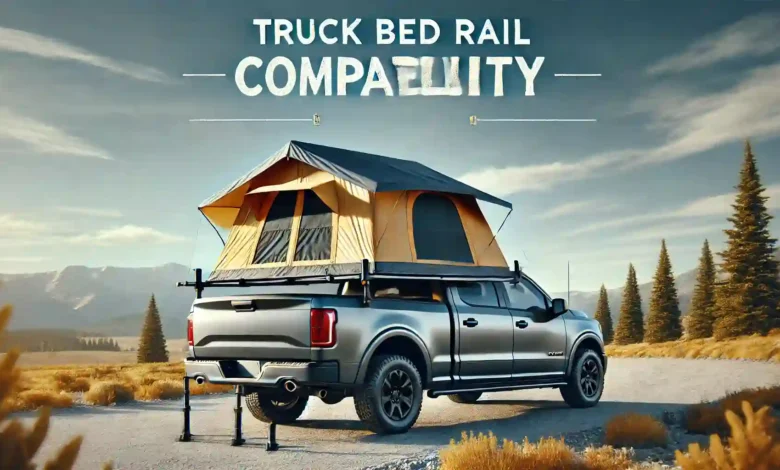
When setting up a truck tent, one of the most crucial factors is the compatibility of your truck bed rails with the tent attachment system. Truck bed rails provide a secure base for attaching various camping gear, including tents. Understanding how these systems work, their benefits, and how to ensure compatibility with your truck model can make your camping experience more enjoyable and hassle-free.
In this article, we’ll explore the importance of truck bed rail compatibility, how it impacts your tent’s stability, and the key considerations for choosing the right attachment system.

Adjustable Truck Tent
➤ Brand: TopGold
➤ Water Resistance: PU2000mm
➤ Product Dimensions: 42″L x 42″W x 96″H
➤ Occupancy: 2 Person
Budget Pick

HEYTRIP Truck Bed Tent
➤ Brand: HEYTRIP
➤ Product Dimensions: 85″L x 65″W x 67.2″H
➤ Occupancy: 2 Person
➤ Water Resistance: 2000 mm
Key Features and Benefits of Truck Bed Rail Attachment Systems
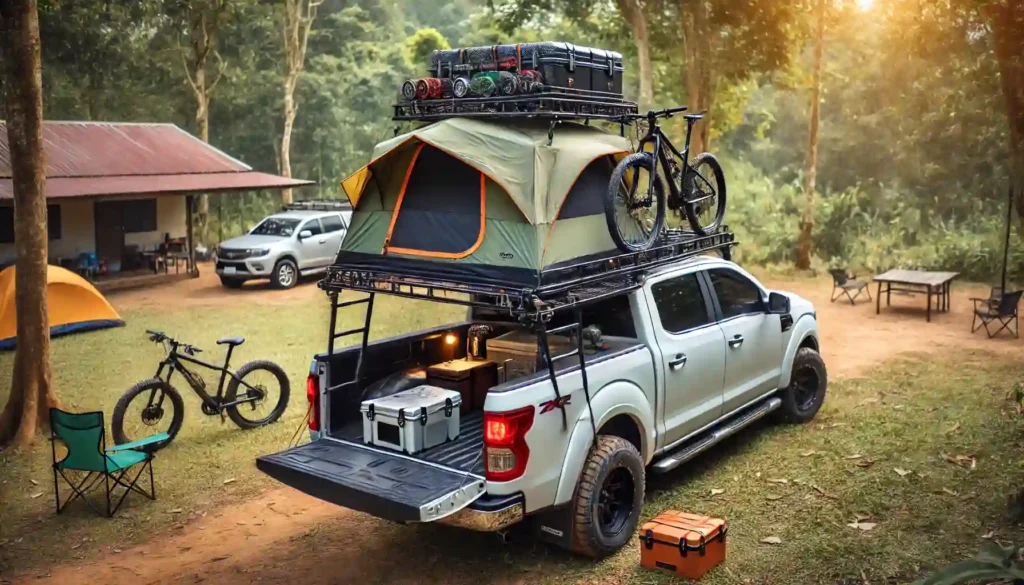
Truck bed rail attachment systems offer several key benefits that make them an ideal choice for campers. These systems are designed to provide a secure and stable foundation for your truck tent, ensuring that it stays in place even in challenging weather conditions. The primary features of these systems include adjustable clamps or brackets that attach directly to the truck’s bed rails, providing a stronghold. Additionally, bed rail systems often allow for quick and easy setup, making them convenient for both short camping trips and extended overlanding adventures.
Another significant benefit of using truck bed rail systems is their versatility. These systems are compatible with many truck models and can be adjusted to fit different bed sizes. This flexibility is beneficial for campers who own multiple vehicles or those who frequently upgrade their trucks. Bed rail systems also support a variety of tent types, from lightweight two-person tents to larger family-sized models, making them a versatile option for different camping needs.
Ensuring Secure Attachment: How Truck Bed Rails Support Your Tent
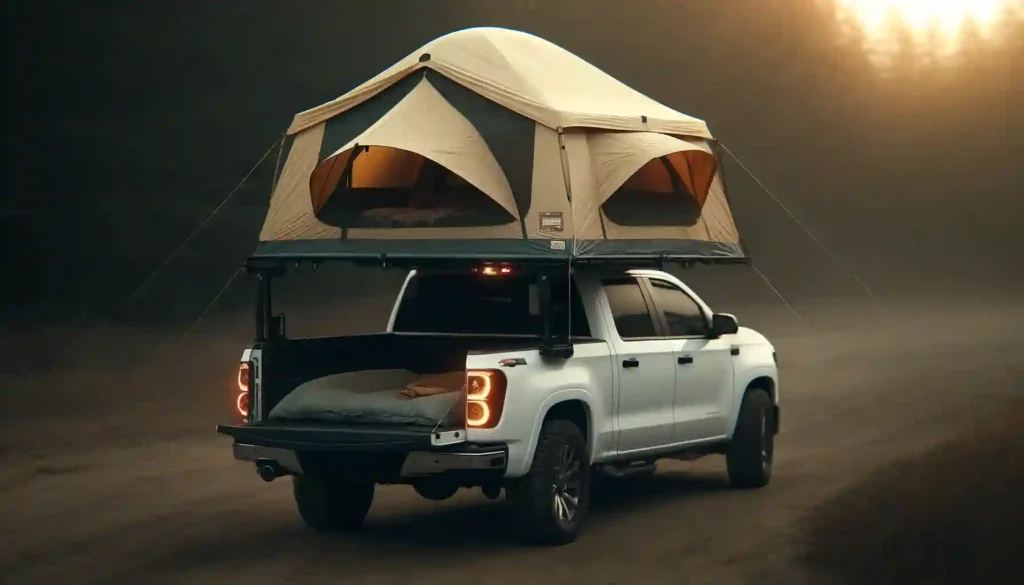
One of the main advantages of using truck bed rails for tent attachments is the added security they provide. The bed rails act as a stable platform that supports the weight of the tent and any additional gear you may store inside. This stability is crucial, especially when camping in areas with high winds or uneven terrain. By securely attaching the tent to the bed rails, you can reduce the risk of the tent shifting or detaching during your trip.
To ensure a secure attachment, it’s essential to use the appropriate clamps or brackets that are specifically designed for your truck’s bed rails. These components are usually made from durable materials like stainless steel or heavy-duty aluminum, which provide a strong hold without damaging the truck’s surface. Properly securing the tent to the bed rails also helps distribute the weight evenly across the truck’s bed, preventing any potential damage to the tent or the vehicle.
Installation Guide: Setting Up Your Truck Tent with Bed Rail Attachments
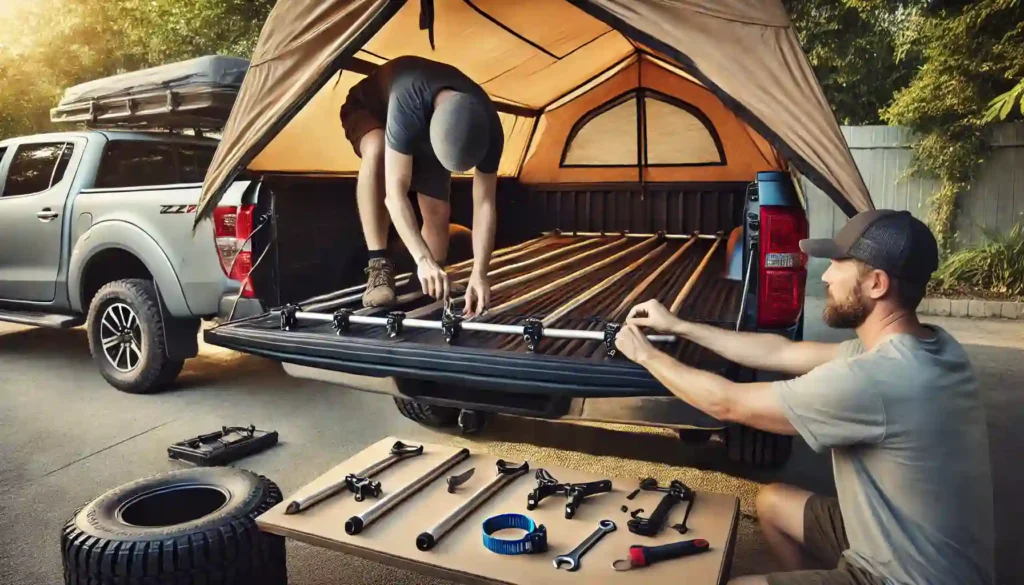
Installing a truck tent using bed rail attachments is a straightforward process, but it’s essential to follow the correct steps to ensure a secure and stable setup. Here’s a step-by-step guide to help you get started:
- Prepare Your Truck Bed: Start by cleaning the truck bed and bed rails to remove any dirt or debris that could interfere with the attachment process. Ensure that the bed rails are free from any damage or corrosion.
- Assemble the Tent: Before attaching the tent to the truck, assemble it according to the manufacturer’s instructions. This typically involves setting up the tent poles and securing the tent fabric.
- Position the Tent: Place the assembled tent onto the truck bed, ensuring that it’s aligned with the bed rails. The tent should sit evenly on the bed, with the attachment points lining up with the bed rails.
- Attach the Clamps or Brackets: Using the provided clamps or brackets, secure the tent to the bed rails. Tighten the clamps until they are firmly in place, but be careful not to over-tighten, as this could damage the rails or the tent.
- Check for Stability: Once the tent is attached, check for stability by gently shaking the tent. If it moves excessively, re-tighten the clamps or adjust the tent’s position as needed.
- Finalize the Setup: After securing the tent, attach any additional components such as rainflies, awnings, or interior supports. Ensure that all parts are properly fastened before using the tent.
By following these steps, you can ensure a secure and stable setup that will keep your tent in place throughout your camping trip.
Compatibility Considerations: Matching Bed Rail Systems with Different Truck Models
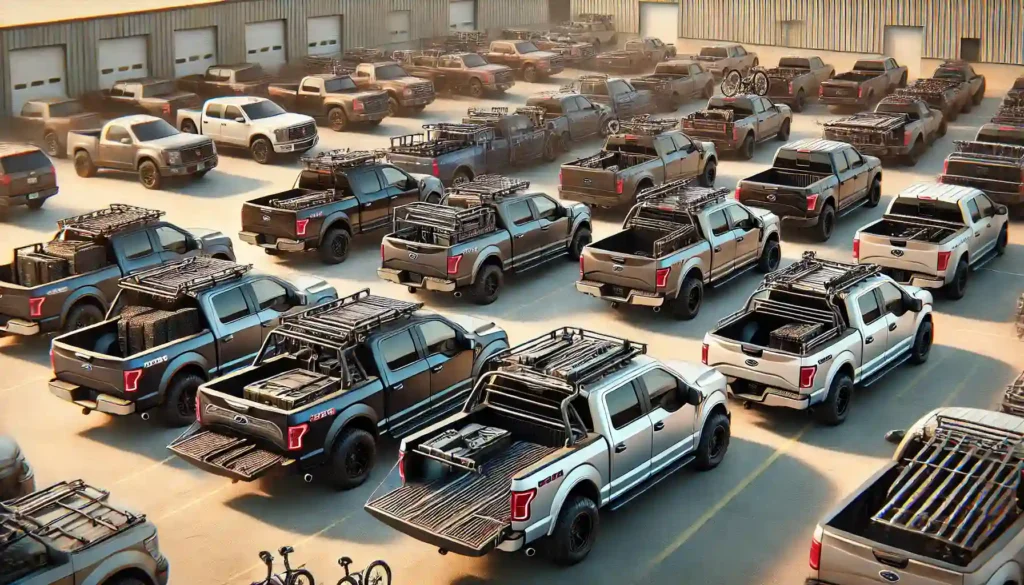
One of the key considerations when choosing a bed rail attachment system is compatibility with your specific truck model. Not all bed rails are the same, and different truck manufacturers may use varying designs and materials. Therefore, it’s crucial to select a bed rail system that is specifically designed to fit your truck’s make and model.
When selecting a bed rail system, consider factors such as the width and length of your truck bed, the height of the bed rails, and the material used in the rails. Some systems are designed to be universal, with adjustable components that can fit a wide range of trucks, while others are model-specific and may require precise measurements for a proper fit.
Additionally, it’s essential to consider the weight capacity of the bed rails. Some trucks are equipped with heavier-duty bed rails that can support more weight, while others may have lighter rails that are better suited for smaller tents and gear. By ensuring compatibility, you can avoid potential issues during installation and ensure that your tent is securely attached.
Durability and Strength: Materials Used in Truck Bed Rail Attachment Systems
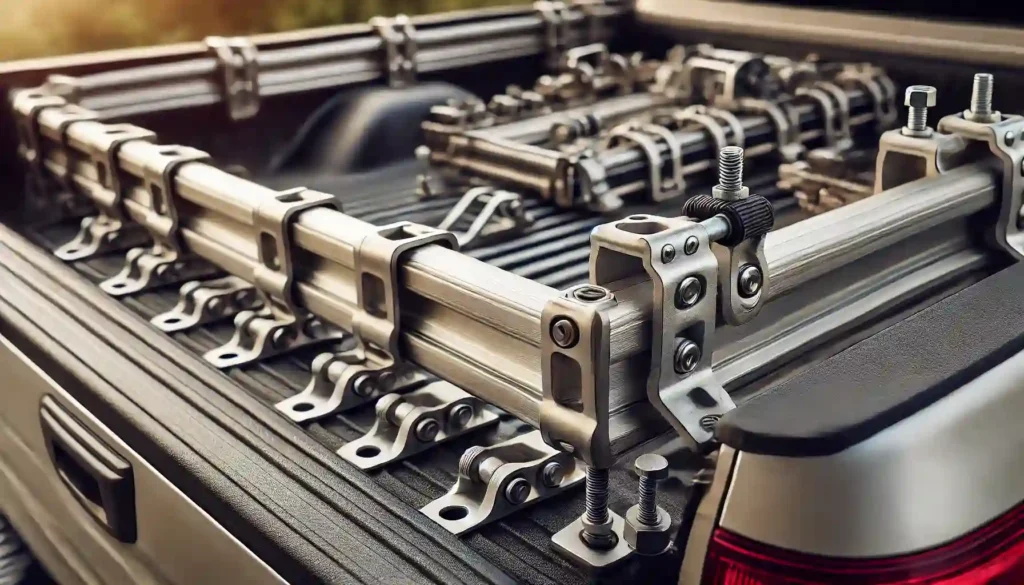
The durability and strength of truck bed rail attachment systems largely depend on the materials used in their construction. High-quality systems are typically made from robust materials such as stainless steel, aluminum, or heavy-duty plastic. Each material offers its own set of advantages and disadvantages, which can impact the overall performance of the attachment system.
Stainless steel
Stainless steel is known for its strength and corrosion resistance, making it an excellent choice for bed rail systems that will be exposed to harsh weather conditions.
Aluminum
Aluminum is another popular material due to its lightweight nature and resistance to rust, making it ideal for campers who need a durable yet easy-to-handle attachment system. Heavy-duty plastic, while not as strong as metal options, offers a lightweight and cost-effective alternative for those who may not need the extra strength provided by metal systems.
When choosing a bed rail attachment system, it’s important to consider the type of camping you’ll be doing and the conditions you’ll be facing. For example, if you frequently camp in wet or coastal areas, stainless steel may be the best option due to its corrosion resistance. On the other hand, if weight is a concern, aluminum may be the better choice.
Weather Resistance: Performance of Bed Rail Attachments in Various Conditions
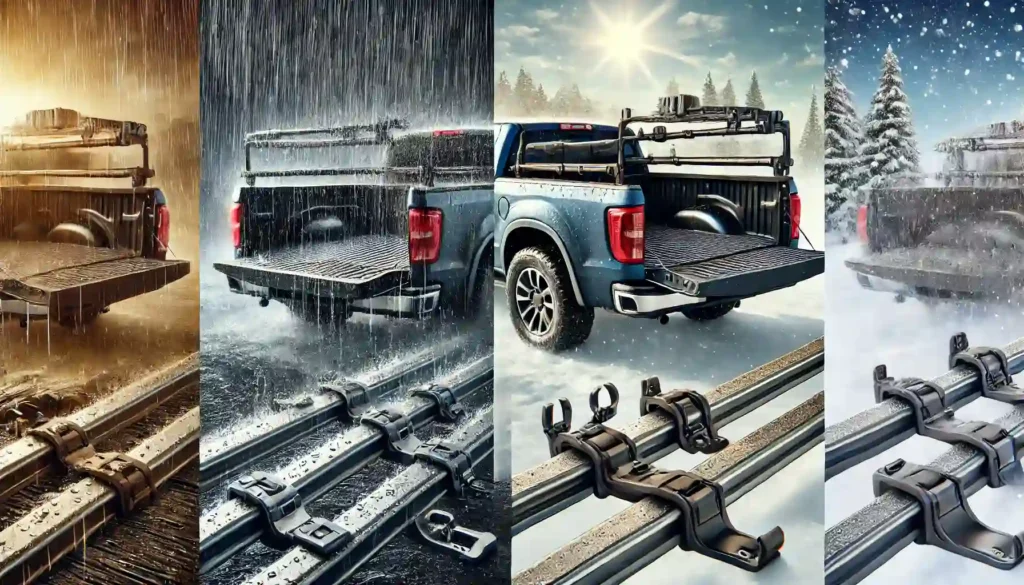
Weather resistance is a crucial factor to consider when selecting truck bed rail attachment systems, especially for campers who plan to use their tents in diverse environmental conditions. Bed rail systems must withstand rain, wind, and even snow without compromising the security of the tent.
The materials used in the construction of the attachment system play a significant role in its weather resistance. For example, stainless steel and aluminum are both highly resistant to rust and corrosion, making them ideal for wet or humid environments. Additionally, the design of the attachment system can impact its performance in different weather conditions. Systems with robust seals and tight-fitting clamps are less likely to allow water or debris to penetrate, keeping the tent secure and dry.
Another important consideration is the temperature range in which the attachment system will be used. Some materials may become brittle in extremely cold conditions, while others may warp or weaken in high heat. Therefore, it’s essential to choose a bed rail system that is designed to perform well in the specific conditions you’ll be camping in.
Versatility: Advantages of Using Bed Rail Systems for Tent Attachments
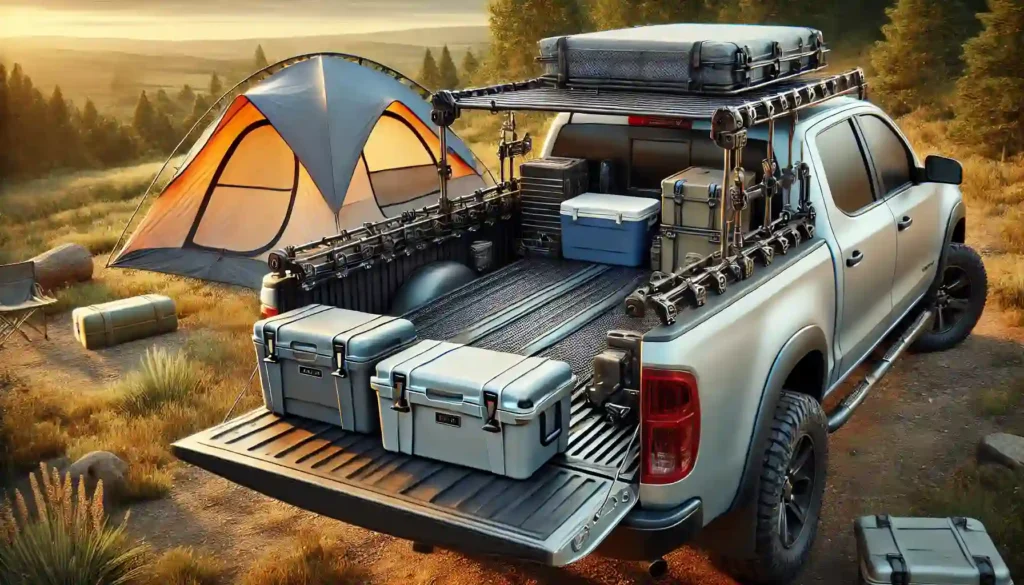
One of the primary advantages of using bed rail systems for tent attachments is their versatility. These systems are compatible with a wide range of truck models and can accommodate different tent sizes and configurations. This flexibility makes bed rail systems an ideal choice for campers who require a customizable and adaptable setup.
Bed rail systems are also versatile in terms of the types of attachments they can support. In addition to truck tents, these systems can be used to secure other camping gear, such as roof racks, bike mounts, and cargo carriers. This versatility allows campers to maximize the utility of their truck bed and create a comprehensive camping setup that meets all their needs.
Another benefit of using bed rail systems is the ease with which they can be adjusted or modified.
Many systems feature adjustable clamps or brackets that can be repositioned to accommodate different tent sizes or configurations. This adaptability is particularly useful for campers who may switch between different tents or add new gear to their setup over time.
Maintenance Tips: Keeping Your Bed Rail Attachments in Optimal Condition
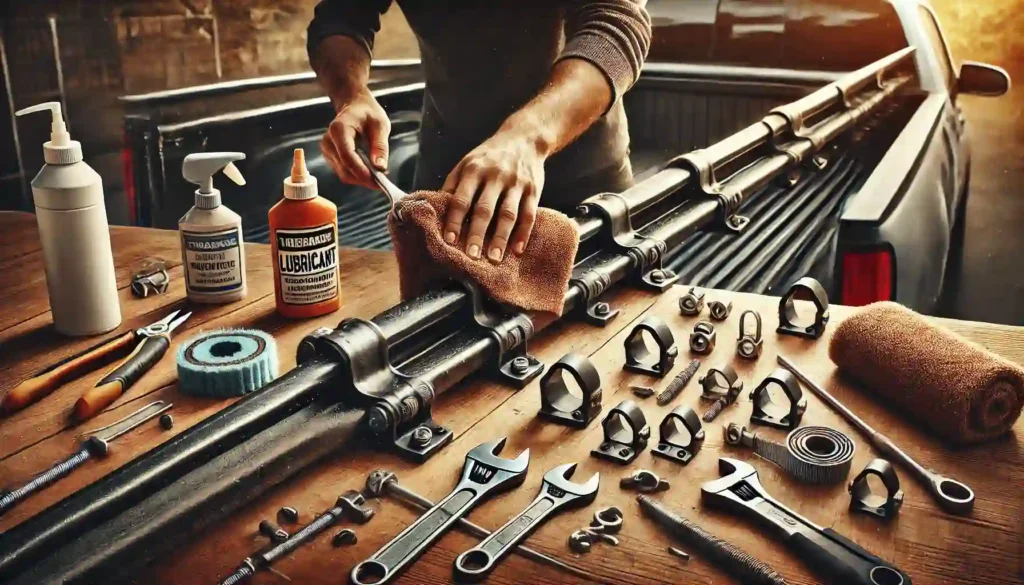
Proper maintenance of your truck bed rail attachment system is essential to ensure its longevity and performance. By following a few simple maintenance tips, you can keep your bed rail attachments in optimal condition and avoid potential issues during your camping trips.
- Regular Cleaning: Dirt, debris, and moisture can accumulate on the bed rails and attachment points, leading to corrosion or damage over time. Regularly clean the bed rails and clamps with mild soap and water, and dry them thoroughly to prevent rust.
- Inspection: Periodically inspect the attachment system for signs of wear or damage, such as loose clamps, bent brackets, or rust spots. Please address any issues immediately to prevent them from worsening.
- Lubrication: Moving parts, such as clamps and bolts, should be lubricated periodically to ensure smooth operation. Use a high-quality lubricant designed for metal components to prevent rust and reduce friction.
- Tightening: Over time, the clamps and brackets may loosen due to vibrations from driving or changes in temperature. Regularly check and tighten all attachment points to ensure the tent remains securely attached. This is especially important before and after each camping trip.
- Protective Coating: Consider applying a protective coating, such as a rust inhibitor or UV-resistant spray, to the bed rails and attachment points. This can help shield the materials from harsh environmental conditions and extend the life of the attachment system.
- Storage: When not in use, store the attachment components in a dry, cool place to prevent exposure to moisture and extreme temperatures. Proper storage can significantly reduce the risk of rust and degradation.
By following these maintenance tips, you can ensure that your truck bed rail attachment system remains in excellent condition, providing reliable performance for many camping trips to come.
Comparing Truck Bed Rail Systems to Other Attachment Methods
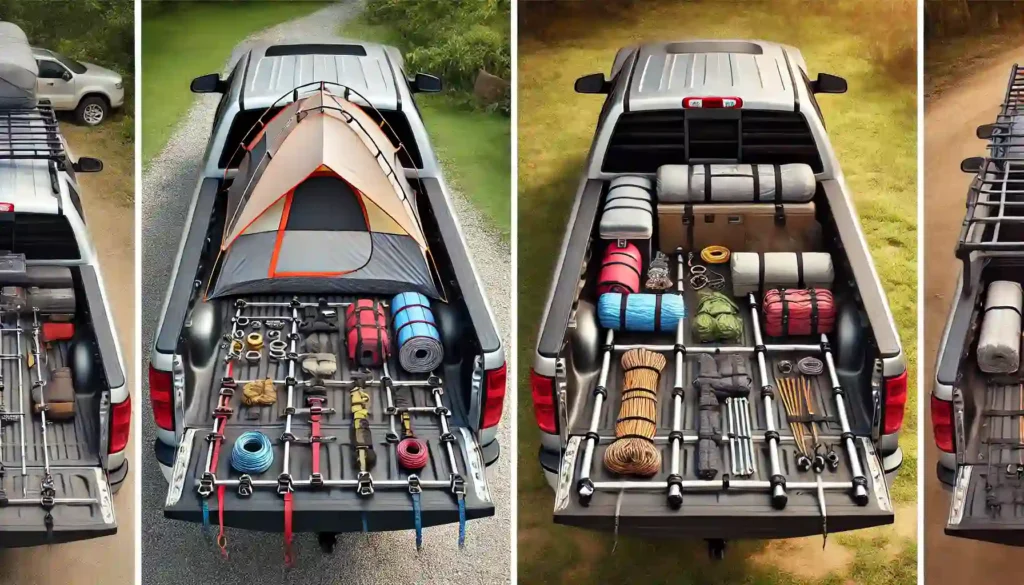
Truck bed rail systems are just one of several methods available for attaching a tent to a truck. To help you make an informed decision, it’s important to compare bed rail systems with other common attachment methods, such as clamp-on attachments, straps and buckles, and quick-release mechanisms.
Bed Rail Systems vs. Clamp-On Attachments:
Clamp-on attachments are known for their simplicity and ease of use. They typically involve clamping the tent directly onto the truck bed’s sidewalls. While effective, clamp-on systems may offer a different level of stability than bed rail systems, especially in rough terrain. Bed rail systems, on the other hand, provide a more secure attachment by utilizing the truck’s existing bed rails, which are designed to handle heavy loads.
Bed Rail Systems vs. Straps & Buckles:
Straps and buckles are versatile attachment methods that can be used on trucks without bed rails. However, they may require more time to set up and adjust compared to bed rail systems. Straps and buckles can also be less secure, as they rely on tension rather than a fixed attachment point. Bed rail systems offer a more permanent and stable solution, particularly for campers who frequently set up and take down their tents.
Bed Rail Systems vs. Quick-Release Mechanisms:
Quick-release mechanisms are designed for campers who prioritize convenience and speed. These systems allow for rapid setup and takedown of the tent, making them ideal for short trips or situations where frequent adjustments are needed. However, quick-release systems may provide a different level of security than bed rail systems, especially in adverse weather conditions. Bed rail systems, while slightly more time-consuming to install, offer greater stability and durability.
By comparing these different attachment methods, you can determine which system best suits your camping needs and preferences.
Enhancing Your Camping Experience with Bed Rail Attachments
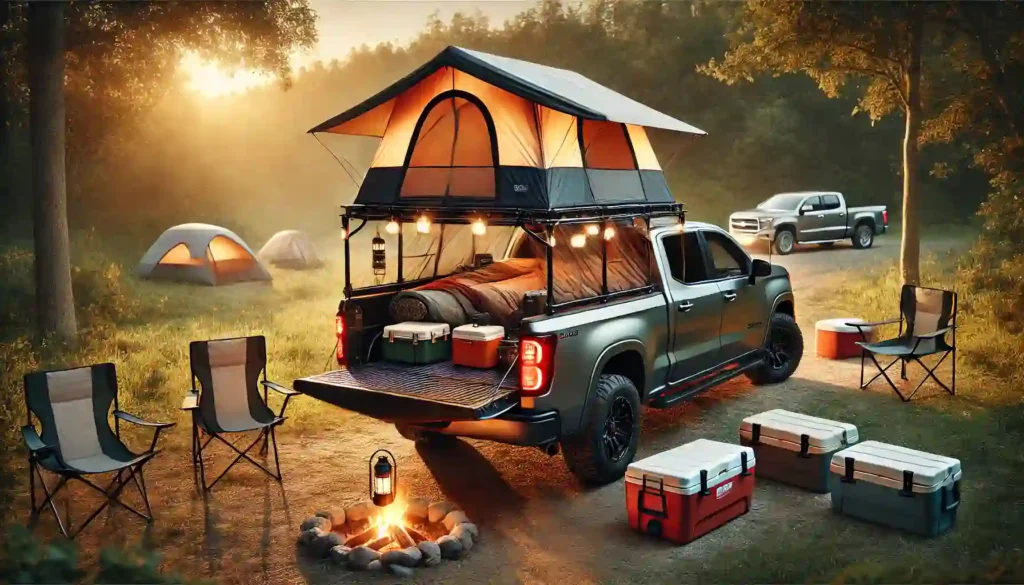
Using bed rail attachments for your truck tent can significantly enhance your camping experience by providing a secure and stable foundation for your tent. This allows you to focus on enjoying the great outdoors without worrying about the security of your shelter. Additionally, bed rail systems often allow for easier setup and takedown, saving you time and effort during your camping trips.
Moreover, bed rail attachments can accommodate a variety of camping gear, making them a versatile option for those who like to bring along extra equipment, such as rooftop tents, awnings, or cargo carriers. This versatility allows you to customize your camping setup to suit your specific needs, whether you’re embarking on a weekend getaway or an extended overlanding adventure.
By choosing a high-quality bed rail attachment system and ensuring proper maintenance, you can enjoy the benefits of a reliable and durable setup that enhances your overall camping experience.
Safety Considerations: Ensuring Secure and Stable Attachments with Bed Rails
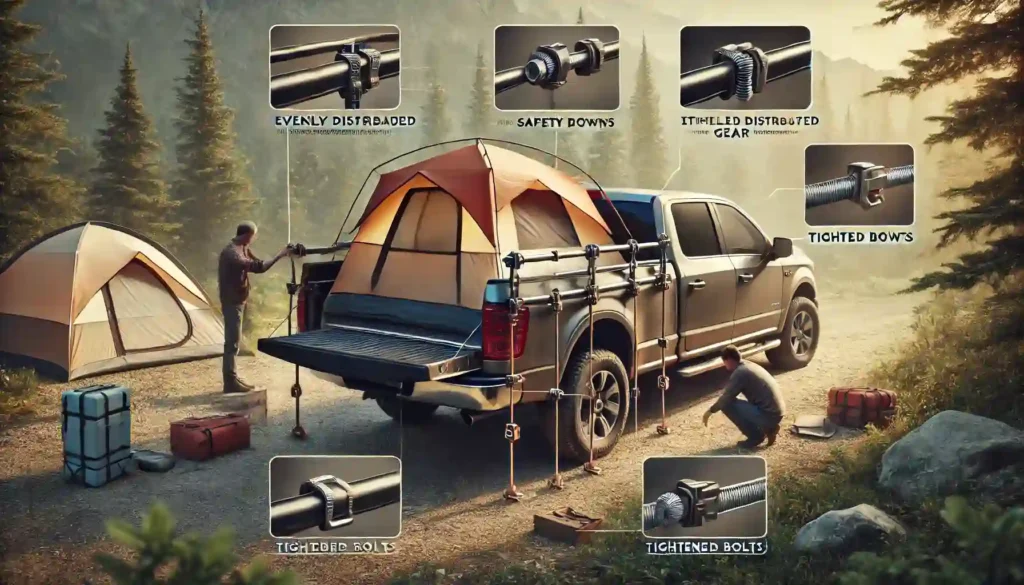
Safety should always be a top priority when setting up your truck tent, and ensuring secure and stable attachments with bed rails is a critical aspect of this. Proper installation and regular maintenance are essential to prevent accidents or equipment failure during your trip.
Check Load Capacity:
Ensure that your truck’s bed rails are capable of supporting the weight of the tent and any additional gear. Overloading the bed rails can lead to damage or failure, putting your tent and belongings at risk.
Even Weight Distribution:
Distribute the weight of the tent and gear evenly across the bed rails to prevent uneven stress on the attachment points. This can help maintain the stability of the tent and reduce the risk of attachment failure.
Regular Inspections:
Before each trip, inspect the bed rails and attachment components for signs of wear, damage, or corrosion. Please address any issues immediately to prevent them from worsening and compromising the safety of your setup.
Secure All Attachments:
Double-check that all clamps, brackets, and fasteners are securely tightened and properly positioned. Loose attachments can lead to instability and increase the risk of accidents, especially in windy conditions.
Follow the Manufacturer’s Guidelines:
Always adhere to the manufacturer’s instructions for installing and maintaining your bed rail attachment system. This ensures that you are using the system as intended and reduces the risk of user error.
By taking these safety considerations into account, you can ensure that your truck tent setup is both secure and stable, providing peace of mind during your camping adventures.
As you continue to explore different attachment systems for your truck tent, understanding the benefits of quick-release mechanisms will be essential. These systems offer convenience and speed, allowing for rapid setup and takedown of your tent. In the next article, we’ll delve into how quick-release mechanisms work, their advantages over traditional systems, and how they can enhance your camping experience.
Conclusion
Truck bed rail compatibility is a critical aspect of setting up a secure and stable truck tent. By choosing the right bed rail attachment system and ensuring it is compatible with your truck model, you can create a reliable foundation for your tent that enhances your camping experience.
From secure attachments to easy installation and maintenance, bed rail systems offer numerous benefits that make them a preferred choice for many over landers and campers. By understanding the various factors involved in truck bed rail compatibility and considering the safety tips provided, you can enjoy a safe and comfortable camping adventure, knowing that your tent is firmly in place.

